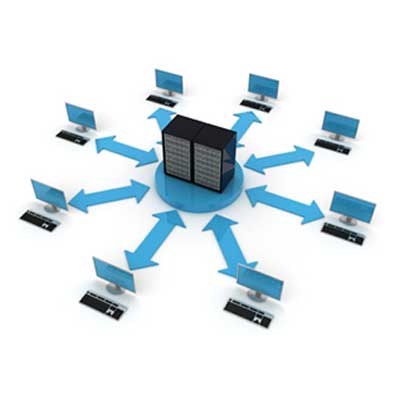While a business continuity plan cannot completely safeguard your business from all these events, it can certainly minimize the damage inflicted on your business. Top business consultants urge their clients to develop a business continuity plan as they consider it a part of the best practices for running a business. A business continuity plan can make the difference between survival and shutdown of a business during a crisis situation. What is business continuity planning? Business continuity planning is the process of creating a blueprint that helps your business respond and recover effectively from an unforeseen mishap. As discussed before, the unforeseen event could range from natural disasters to pandemics, or even accidents that affect just your place of business like a fire or even a cybercrime attack directed at your business in particular–basically, any event that can paralyze your business. A business continuity plan serves as a step-by-step guide that you can follow during an emergency to keep your business running smoothly. True, a business continuity plan is not a sure shot method to survive a crisis, it won’t instantly eliminate the impact of the disaster, but it gives you the best chances of survival. If you are not sure of what a good business continuity plan entails , you can reach out to a reputable MSP to help you with the preparation and implementation of one.
The Impact of Remote Work There have been plenty of positive effects brought on by the implementation of remote work policies for businesses to only embrace it further. A recent study by Intermedia surveyed the owners of 250 businesses and revealed a telling selection of these effects, including: Increases in employee availability in 19 percent of these businesses Increased job satisfaction—15 percent—and life satisfaction—seven percent—alike Decreased overhead costs Improved employee attitudes Reduced work-related stress Increased engagement Out of these businesses, 85 percent had primarily functioned in a centralized office space, but with remote work exploding in prevalence as social distancing has been adopted, that number has gone down to 26 percent. Simultaneously, video conferencing increased in use by 27 percent, from a rate of 57 percent to 84 percent. This only makes sense, as businesses must continue their operations to remain open. If remote work is the only way to do this without jeopardizing the health and safety of their employees, clients, and customers, the smart play is to embrace remote operations. Will Remote Work Last Longer than the Pandemic? Admittedly, it can be hard to even think about the time after the current health crisis is over, as so much has changed in the relatively short time we’ve all been living this new normal. We don’t think that remote operations will go away, though. Consider the list of benefits that businesses reported seeing. The biggest concern that many of these businesses had was the matter of engagement: how could they attract and convert clients when face-to-face conversions were once their de facto strategy? However, these concerns were not fueled due to any influence by technology restrictions, as the explosion in conferencing we discussed above goes to show. As a result, we can confidently conclude that many businesses won’t shift away from remote operations when they are no longer required for survival. The benefits—increased team satisfaction and at least the same levels of productivity—are just too good to pass up. SRS Networks can help you embrace the remote capabilities that can help your business survive these challenges, along with many other IT tools and resources. Give us a call at (831) 758-3636 to learn more about what we can do for your business technology.
Seriously, Have You Noticed How Many People Resort to Waving? Think back to the last remote meeting you participated in. You and the other members of the meeting log in, the requisite business is completed, and as everyone signs off… goodbye waves are exchanged? But why? Why do we suddenly feel obligated to wave goodbye to people that we’re meeting with, just because the format of the meeting has changed? According to some experts of behavioral studies, it is this change that is to blame. These waves—and other odd new habits—are nothing but our subconscious attempts to maintain some normalcy as we communicate remotely. Why These Habits Have Normalized Therapists have postulated that, as our typical communications were so suddenly altered by necessity, we have adapted to the relative limitations of remote collaboration and communally developed a new etiquette. Despite their considerable utility (particularly as of late) remote conferencing and other similar solutions have a few downsides that must be considered, largely due to physical limitations. Let’s look at the basic science behind these tools. Your camera and microphone take in information, convert it into a format that can be sent digitally, send it to the person you are conversing with, and once it arrives, translate it back into a format that your collaborator can comprehend, seeing what you said and did. While this all can be completed at a remarkably fast speed, it is far from instant, and still takes relatively much longer than it would if you and your collaborator were speaking face-to-face. Take things like slow internet speeds and other delays, and some delay is effectively unavoidable. The result: awkward pauses, sudden interruptions, and the other issues that so many remote conferences and meetings suffer from. In response, we’ve learned how to incorporate nonverbal communications into our mid-meeting body language, almost subconsciously. Rather than just pressing a button to disconnect from a meeting if the need arises, we take the moment to excuse ourselves from the group and announce our departure via a quick wave to everyone else. It is also likely that you and your team are feeling isolated, as interaction is likely at a horribly low point. This, it is hypothesized, has led to overcompensation. This overcompensation could include nodding along as people speak, raising a hand to signify that you have something to contribute, as well as the farewell waves that so many have adopted as they sign off. How to Communicate Better with Nonverbal Cues Such signals can help to push your conversations forward as you are working remotely. By adding another layer of meaning to what is said, your conversations can move along and be more informative. You’ve likely seen many of these cues in your own experience: Accenting Gesturing or otherwise using your body language to emphasize points and draw attention to certain details. Complementing Matching the language used with the emotion that your body language conveys. Contradiction Alternatively, intentionally mismatching your language to your body language to draw attention. Repetition Returning to and building upon your message over and over to help reinforce it. Substitution Expressing your opinion physically, rather than verbally, to make your message overwhelmingly clear. Looking pleased when you’re pleased, and vice versa. Of course, there are other nonverbal cues that deserve some honorable mention: Backchannels, such […]
While corporate-level data losses and insider theft are well publicized, many smaller businesses have also become casualties of data loss and theft. Following a significant data loss, it is estimated that a small-to-medium sized business can lose up to 25% in daily revenue by the end of the first week. Projected lost daily revenue increases to 40% one month into a major data loss. According to The National Archives & Records Administration in Washington, 93% of companies that have experienced data loss, coupled with prolonged downtime for ten or more days, have filed for bankruptcy within twelve months of the incident while 50% wasted no time and filed for bankruptcy immediately. Finally, 43% of companies with no data recovery and business continuity plan actually go out of business following a major data loss. Still, a survey conducted by Symantec SMB revealed that fewer than half of SMBs surveyed backup their data each week. Only 23% of those surveyed said they backup data every day and have a business continuity plan in place. Businesses play on a much bigger playing field than they did two decades ago. Any disruptive technological event – even the smallest of incidents – can have an amplified impact on day-to-day business and profitability. Being proactive with data recovery solutions, and having emergency response procedures in place prior to a disruption or data disaster, is the only way to minimize downtime and soften the impact of such events.
To begin, it is important to acknowledge the different ways that costs—especially IT-related costs—can be optimized. Processes can be moved to the digital space and automated, helping to increase efficiency and eliminate waste and redundancy. Agreements and prices can be negotiated for purchased services and solutions, allowing businesses to reduce costs and cultivate professional relationships. Business resources can be standardized and streamlined, so more can be accomplished for a smaller investment. As it happens, a managed service provider can assist a business on all three of these fronts. Let’s go over a few ways that these goals can be achieved through some of the services offered as a part of an MSP’s offering. Vendor Management Businesses need to deal with their vendors all the time, which can often result in less time left for their other initiatives to be focused upon. Many MSPs will take on this responsibility on your behalf and allow you to direct your attention to your business’ affairs. As an auxiliary benefit, as these MSPs will likely be working with these vendors on the behalf of several clients, they likely have a healthy business relationship with them. This means that they likely are offered bulk deals and other perks that can translate to similar benefits on your end. Proactive Maintenance There is no getting around it: technology is expensive. Not only does it require an upfront investment to procure, maintaining it can quickly rack up some significant costs that can be challenging to predict. An MSP’s proactive maintenance can help to resolve this, as issues can be mitigated before the associated costs begin to blossom and expand. Cloud-Based and Remote Services With the technology that is available today, it is far easier for business services to be scaled to the size that a given company will require, and to be delivered in a much more efficient way. This allows more businesses access to the tools and support that they need to maintain their operations, as they will be more accessible and (as we’ve established) more financially feasible for these businesses to invest in. Working with an MSP to put these tools to use will allow businesses to get the most value (again, through proactive maintenance and vendor management) for their investments. The value that an MSP can provide to a business of any size cannot be understated. We’d be happy for the opportunity to show you how you could benefit from it. Reach out to our team at (831) 758-3636 and learn more about our services today.
Spotting Burnout in Remote Employees As you would imagine, burnout in the home is remarkably like burnout in the office. The big difference is that there is no longer an office to leave workplace stress behind in. Furthermore, many people can’t help but see the inherent hypocrisy of the situation. Many people have pushed for the capability to work remotely in the past, only to be rebuffed, so now being required to do so can be frustrating. To be clear, these employees aren’t frustrated that they are still able to work, but some of the other impacts of this situation have caused no small amount of friction. For instance, many of the people who were furloughed because of recent events may have been paid as much as four times the amounts that those still working 40-hour weeks. While there’s little that most business owners can do about this, it has caused some negative feelings. These feelings could easily bleed into the work that your staff is doing. Another common factor that contributes to burnout is the loss of any separation between the responsibilities of work and of personal life. Your employees are still human beings, so the idea of not having any break between working from home and working on their home life can be frustrating. Without any downtime to spend recuperating and processing what has been accomplished, it can be hard to see these accomplishments. This is what makes our first tip so important: Establish Boundaries Working remotely doesn’t mean that your work hours change, you should just be working in a different location. Therefore, you need to be vigilant about how long you are working. While it is admirable to want to put in the extra hours, it is ultimately better for your performance (and your business’ budget) to stick to the schedule you would normally keep and spend your personal time taking care of personal things. Working from home also brings with it a new set of potential distractions to draw you away from your work. The people you live with can inadvertently cause a strain on your focus, as can any pets you may keep. Certain temptations are also present in the home that wouldn’t be found in the office, such as streaming services or social media. Establishing a space in your home that is dedicated to work can help you to focus better, especially by assisting you with our next tip. Minimize Distractions We’ve established that the home has plenty of stimuli that can draw your attention away from your tasks and responsibilities. A dedicated workspace helps to minimize these distractions, which in turn allows you to be more productive and reduces your temptation to work longer hours, diminishing the feeling of working all the time. Of course, the expectations that others have of us (or rather, that we think others have of us) can often contribute to the burned-out feelings that so many get. It is important that everyone on your team is able to keep the following in mind: while working from home isn’t the ideal situation for everyone, recent events made it the only feasible means of keeping the business open and operational. A little bit of stress now can help lead to a better future, with a job at a business […]
Maintaining Security While there are many automated precautions that can help defend your business, your real weaknesses are likely derived from your users. Cybercriminals are aware of this and will not hesitate to use it to their advantage. To help counter these efforts, you need to make sure that your employees are aware of the many varieties of threats that might darken your business’ analogous doors. Not only that, your team should be able to recognize these threats as they encounter them and know how to respond appropriately. This means that you need to educate your employees about the threats they should look out for and evaluate their preparedness through testing processes. Basic IT Capabilities On the topic, your entire team should have some basic awareness of best practices, with access to written documentation to help support them. For instance, they should know what is expected of the passwords they create for themselves and how to best use the tools that they are provided, taking backups, and other very important processes. Seeking Out Assistance Of course, should assistance be required (or even if it just makes the employee more comfortable to have a professional watching over them) your team should also know the protocols for reaching their IT support resource to report their given issue, as well as the best means of doing so. At some point, you’re going to have to place your trust into your team. To do that, however, you also need to ensure that they are trustworthy by training them to be. We can help by giving you the technology to support your operations. Find out what else we have to offer by calling us at (831) 758-3636.
How Businesses Can Benefit from Managed Services Right Now It goes without saying, but businesses everywhere are feeling the impacts of widespread orders to close their doors in the attempt to minimize the continued spread of COVID-19. While this makes the idea of any major operational shifts intimidating for the small business owner, the transition into a managed service agreement can ultimately help protect your business from closing for good. Let’s look at a few of the difficulties that the COVID-19 pandemic has caused for businesses, and how working with a managed service provider (MSP) makes these difficulties somewhat less of a concern. Challenge #1: Businesses Can’t Operate with their Teams Staying Home Naturally, without their employees coming in to work, businesses have found it difficult to keep up on their workloads. This obviously isn’t a great situation for these businesses. However, in the face of such a pandemic, employees can hardly be blamed for wanting to minimize their chances of infection by staying home. This is an especially big problem for businesses deemed essential, as people are still relying on their services, but they can’t in good conscience put their employees at risk. With an MSP’s support, it is much easier to find a balance to maintain operations, especially for those businesses who can sustain themselves via remote work. While this may not apply to all industries, those that can function without employees needing to come into the office can adopt the solutions and security required to do so. In these cases, an MSP can serve as a useful resource by helping to manage the use of these solutions. Challenge #2: IT Support is Difficult to Acquire Safely Working from home is one thing. Receiving support for the technology that is used in the home is (for many) another can of worms entirely. While this is true in most circumstances, the need to keep our distance from one another makes this a larger concern. You don’t want to put your team members, or the repair technician for that matter, at risk. An MSP can help resolve this situation on two fronts, both thanks to the remote nature of managed services. First of all, the management of your IT means that an MSP’s technicians will always be using remote monitoring tools to catch and diagnose issues on the devices that your team uses. Secondly, with the same remote access, the MSP can then resolve many of these issues without an in-person visit at all, whether your team is in the office or working remotely. Challenge #3: The Economy Isn’t Strong Enough to Invest in Any Additional Services Let’s do a quick comparison between how the traditional IT services will bill your business, compared to what is included by an MSP. The old-school repair service doesn’t incorporate additional fees into their rates, like time and materials. As a result, the total price can be wildly unpredictable, and practically impossible to budget for accurately. On the other hand, by offering a predictable service covered by a comprehensive monthly fee, the MSP’s rates can be budgeted for and scaled with the services delivered. With a few exceptions for out-of-scope services, a business that signs on with an MSP can operate with the confidence that they know what their bill will say each month […]
Right now most businesses have some sort of cybersecurity platform in place. whether they use a firewall or actively monitor their network or have a more comprehensive solution in place, Protecting their digital assets has to be something that every business does. Unfortunately, even with all the diligent cybersecurity that businesses put in place, some bad things still get through. Since these systems typically never stop, threats are coming into your network every single day. There have been calls for cyber-clemency. Unfortunately, this is the type of scenario that hackers thrive in. With most workforces working remotely, it stands to reason that they aren’t as protected as they would be if they were still working at their offices. As a result, efforts to improve endpoint security become important to maintaining data security. There are steps you can take to try and maximize your security, but the most important action that you can take is to train your workforce to know how to protect your business when completing their remote work. Here are four things they should know: How to effectively manage passwords – Each one of your employees should be versed in how to build a solid password. No two accounts should have the same password, and since most people need to access over 10 different accounts to complete their work, using a password management tool that allows them to secure their passwords in one central location is prudent. Know how and where to use the Internet – It can be extremely dangerous to use unsecured Wi-Fi in public places when working with proprietary or sensitive data. The fact is that any threat that comes in from the Internet could be a massive problem for your business. Knowing where to use the Internet and what tools they can use to secure data transmission (remote access, VPN, etc.) any member of your staff can help you secure your network by simply being cognizant of their connection decisions. Know how to identify threats – One of the best ways that your staff can help you to secure your network is by knowing how to spot phishing threats. Millions of businesses every year fall victim to phishing attacks and if you take time to train your staff, you can do well to keep threats at bay. Know how to react if something bad does happen – Bad things happen and your business is not immune from them. Whether one of your workers accidentally clicks on a phishing attack and it delivers malware into your network, or hackers use vulnerabilities to get in, problems aren’t the end of the world: as long as there is fast communication and action. You need to ensure that there is a clear pathway for your employees to pass on potential security issues to your IT administrators so that they can find a way to quarantine the issue before it becomes a major problem for your business. This is a strange time and with any semblance of normalcy still weeks (or months) away, some business owners are panicking. This is not the time for impulsive decision making. By staying calm, you will make more calculated decisions and you just may be able to get through this situation with your business intact, and with employees that are smarter than when […]
Communication Is (and Isn’t) Easy If a business is in operation today, it’s a safe bet that their employees each have their own email account for the business. Email usually serves as a good foundation for a business’ communication strategy, as it is a convenient means of communicating internally, with any vendors you are working with, or with your clients. However, email isn’t perfect. There is the chance that miscommunications can occur when using email—and on a related note, instant messaging—and ultimately derail your productivity. To help prevent this situation, it is recommended that more complicated communications take place using video conferencing. Combining webcams and microphones, video conferencing allows people to interact with each other in a format that provides non-verbal cues that written correspondence and telephony just don’t express. With the right solution, meetings and discussions can be held between parties in different postal codes practically as if they were in the same room. Therefore, it can be considered best practice to have a comprehensive assortment of collaboration tools at your disposal for use in different circumstances. Etiquette Matters When communicating within a team, it is important that a certain level of decorum is maintained. For example, important conversations are not the place for redundancy. If a conversation drags on for too long or has far too many irrelevant details that drown out the important ones, the people who are supposed to get the message are far more likely to miss it. Make sure your team is subscribing to the KISS principle as much as they can when they are sharing important information with one another. Sarcasm also doesn’t translate well in many methods of communication, so avoiding its use is best, especially when remote work is involved. If someone misses the joke, it could create serious issues in your company culture and/or your productivity. On a related note, insist that your team keep important conversations free of jokes, memes, and emojis. Even if Grumpy Cat had some amusing commentary to offer that summed up the gist of your conversation well, there is the risk that the testy tabby will distract from an important detail. Make sure that any messages you share with your team are also very easy to understand, and if you receive some that aren’t, don’t be shy about asking for clarification. For collaboration to work properly, the right information needs to be passed along efficiently and comprehensively. This also makes proofreading especially important. Spending a few extra seconds to go over what you’ve written to make sure that there aren’t mistakes, omissions, or other factors to get in the way of what you’re trying to say helps keep you from having to backtrack and explain things again later. This can also keep incorrect presumptions from influencing the results of your efforts. Remote work can be challenging to adapt to, but the right tools and behaviors to facilitate communications can simplify things considerably. For assistance in setting up the communication solutions to make remote work a feasible option for your business, reach out to SRS Networks by calling (831) 758-3636.










